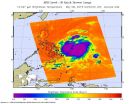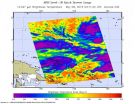Altering genes with the aid of light
Pitt chemist Alexander Deiters is the first to create a light tool for gene editing
2015-05-08
(Press-News.org) PITTSBURGH -- Scientists have been manipulating genes for a while. The University of Pittsburgh's Alexander Deiters just found a way to control the process with higher precision.
By using light.
Deiters and his group are the first to achieve this. The resulting paper was recently published in the Journal of the American Chemical Society.
Since 2013, scientists have used a gene-editing tool called CRISPR/Cas9. The method employs a bacterially derived protein (Cas9) and a synthetic guide RNA to induce a double-strand break at a specific location in the genome. This enables excision of a gene, alteration of its function, or introduction of desired mutations.
In practice, the CRISPR (Clustered Regularly Interspaced Short Palindromic Repeats of DNA base sequences) method has shown tremendous promise to enable researchers to treat cystic fibrosis and sickle-cell anemia, create laboratory animals that mimic human disease, and create a strain of wheat resistant to powdery mildew.
Deiters, professor of chemistry in Pitt's Kenneth P. Dietrich School of Arts and Sciences, along with colleagues at the University of North Carolina at Chapel Hill, have, through a series of experiments, found a lysine residue (lysine is an amino acid) in Cas9 that can be replaced with a light-activated analog.
The approach developed by Deiters generates a Cas9 protein that is functionally inactive, so called "caged," until the cage is removed through light exposure, activating the enzyme and thereby activating gene editing.
"This method may allow people to engineer genes in cells or animals with better spatial and temporal control than ever before," Deiters says. "Previously, if you wanted to knock out a gene, you had limited control over where and when it would happen. Engineering a light switch into Cas9 provides a more precise editing tool. You can say, 'In this cell, at this time point, is where I want to modify the genome.'"
The improved control over the time and location at which a gene will be manipulated, Deiters says, may help eliminate "off-target effects" and could potentially enable genetic studies with unprecedented resolution.
INFORMATION:
5/6/15/klf/cm
Disclaimer: If you do not wish to receive further news/releases from University of Pittsburgh, please click the following link: [Remove Me]. Requests will take a maximum of 2 business days to process.
Contact information: Katie Fike, University of Pittsburgh, 400 Craig Hall, 200 S. Craig Street, University of Pittsburgh, Pittsburgh, PA 15260
ELSE PRESS RELEASES FROM THIS DATE:
2015-05-08
Object recognition -- determining what objects are where in a digital image -- is a central research topic in computer vision.
But a person looking at an image will spontaneously make a higher-level judgment about the scene as whole: It's a kitchen, or a campsite, or a conference room. Among computer science researchers, the problem known as "scene recognition" has received relatively little attention.
Last December, at the Annual Conference on Neural Information Processing Systems, MIT researchers announced the compilation of the world's largest database of images ...
2015-05-08
The Philippines warning center has raised a #2 warning for its citizens in the Luzon province of Catanduanes. This warning indicates, among other things, that the tropical cyclone will affect the locality and that winds of greater than 100 kph up to 185 kph (62 to 114 mph) may be expected in at least 18 hours.
Philippines know the storm as Dodong and have also raised warning #1 for the areas of Luzon provinces of Sorsogon. Albay, Camarines Norte, Camarines Sur, Quezon, Polillo Island, Aurora, Quirino, Isabela and the Visayas provinces of Northern and Eastern Samar.
Warning ...
2015-05-08
Forecasters expect Tropical Depression 07W which is riding behind Typhoon Noul to intensify to typhoon strength within the next five days. Currently 07W is located 298 miles southeast of Pohnopei, one of the Federated States of Micronesia. It is moving at a slow 5 knots on a east northeast trajectory with maximum sustained winds of 30 knots gusting to 40 (18 to 24 mph). Maximum wave height is 11 feet. 07W is moving east, but will turn round to a northwesterly course.
A tropical storm WARNING is in force for Kosrae, Pingelap and Mokil in Pohnpei State. A tropical storm ...
2015-05-08
For the last decade, scientists have deployed increasingly capable underwater robots to map and monitor pockets of the ocean to track the health of fisheries, and survey marine habitats and species. In general, such robots are effective at carrying out low-level tasks, specifically assigned to them by human engineers -- a tedious and time-consuming process for the engineers.
When deploying autonomous underwater vehicles (AUVs), much of an engineer's time is spent writing scripts, or low-level commands, in order to direct a robot to carry out a mission plan. Now a new ...
2015-05-08
The EU-funded MycoSynVac project combines gene engineering and biotechnology to design a novel veterinary vaccine chassis based on the bacterium Mycoplasma pneumoniae.
By combining their systems biology expertise with cutting-edge synthetic biology methodologies, researchers will engineer a universal chassis, which will be free of virulence and optimized for fast growth in a serum-free medium.
This chassis will be used to create specific vaccines against two highly detrimental pathogens that are causing suffering in livestock animals and large financial losses to the ...
2015-05-08
TAMPA, Fla. -- Androgen deprivation therapy (ADT) is a common treatment option for patients with advanced stage prostate cancer. But nearly 80 percent of patients who receive ADT report experiencing hot flashes during and after treatment. Moffitt Cancer Center researchers are working to determine what genetic factors and other characteristics might make prostate cancer patients more likely to experience hot flashes during and after therapy.
Cancer therapies often are associated with unwanted side effects. Some side effects can be so debilitating that patients decide ...
2015-05-08
Mexico is undergoing a transformation: ranked as the second largest economy in Latin America, it's an increasingly dynamic middle-income country -- and its population is ageing rapidly. How will this relate to the burden of cancer?
Mexico is an interesting case study for the relationship between population ageing and cancer burden, according to new research published in ecancermedicalscience.
Researchers led by Dr Ajay Aggarwal of the Institute of Cancer Policy, Kings College London, UK, examined population data, cancer databases, and the research output of Mexican ...
2015-05-08
The ability that some people have to use echoes to determine the position of an otherwise silent object, in a similar way to bats and dolphins, requires good high-pitch hearing in both ears, according to new research from the University of Southampton.
The study, published in Hearing Research, found that locating an object by listening to echoes, without moving the head, requires good hearing at high frequencies and in both ears. This builds on research published in 2013 by the team at the University's Institute of Sound and Vibration Research (ISVR) that demonstrated ...
2015-05-08
Scientists at LSTM have come a step closer to understanding why people exposed to household air pollution (HAP) are at higher risk of lung infections such as pneumonia and tuberculosis.
Three billion people worldwide are exposed to HAP from the fuels they burn to cook, light and heat with at home. Frequently, charcoal, wood and food waste are burned and generate high concentrations of smoke particles. This exposure is associated with increased risk of pneumonia, particularly in low and middle income countries where bacterial pneumonia is the biggest cause of infant mortality. ...
2015-05-08
PITTSBURGH-- Countless research and self-help books claim that having more sex will lead to increased happiness, based on the common finding that those having more sex are also happier. However, there are many reasons why one might observe this positive relationship between sex and happiness. Being happy in the first place, for example, might lead someone to have more sex (what researchers call 'reverse causality'), or being healthy might result in being both happier and having more sex.
In the first study to examine the causal connection between sexual frequency and ...
LAST 30 PRESS RELEASES:
[Press-News.org] Altering genes with the aid of light
Pitt chemist Alexander Deiters is the first to create a light tool for gene editing


